For many of us, trying new flavours while we are on holiday is a “must do”. Sometimes that will be a new liqueur or a local wine. At other times that could be a cocktail or mixed drink. Here are five of my favourites that I have either discovered on my travels around Spain or been introduced to in the UK and then tried again in a local setting.
Mixing it up a little
Some people would have called this list “5 of my favourite Spanish cocktails” and I have seen all of these drinks on lists named similarly. However, they don’t all meet the “base (the spirt or sprits), modifier (something to change the flavour) and mixer (usually something carbonated, a fruit juice or a dairy product)” definition of a cocktail that I was taught when I was a bartender, so I’m going to stick to “mixed drinks”. Anyhow, enough waffle let’s get this party started…
Sangría
I was first introduced to Sangría in the exotic surroundings of the long-gone Swansea branch of Pizzaland. It then became a staple of many nights out where we would start the evening with pitcher of if, dished up out of huge vats in a display fridge, at Jules Wine Bar (also very much gone) in my home town. It was many years later that I tried it in Spain. Gotta say, it tasted much better there than any I have had in the UK (probably the holiday mood affecting the taste buds).
Sangría has its origins in Leonese lemonade, a drink from the Léon region of Spain that dates back to the Middle Ages. The drink is made from red wine, lemons, sugar and cinnamon and was served at festivals. Sometime in the nineteenth century, it evolved in Sangría with addition of brandy and orange. As with most things in Spain, there are regional variations on the recipe, but the base of red wine and fruit is constant. The recipe below is one that I learned at a Spanish cooking class.
Interestingly, while most Brits would consider it a typical Spanish drink, it is mainly consumed by tourists.
Where to try it
You can get Sangria all over Spain. However, a lot that will be made to order for the tourists. Sangria needs time to marinade, so the made to order stuff will never be great. Here’s a few suggestions for a proper one:
- Casa Lolea in Barcelona – Great Sangria, fantastic tapas and polkadot decorations
📍 Address: Carrer de Sant Pere Més Alt 49, Barcelona, 08003
🏡 Neighbourhood: La Ribera
🚇 Nearest station: Urquinaona – L1 & L3
🚍 Bus routes: 19, 47, D50, H16, V15 & V17 - Taberna El Sur in Madrid – Fun bartender & great service in one of the city’s top-rated tapas bars
📍 Address: Calle de la Torrecilla del Leal 12, Madrid, 28012
🏡 Neighbourhood: Centro
🚇 Nearest station: Antón Martin – L2
🚍 Bus routes: 6,26, 32 & N26 - La Rentaora in Valencia – Great food, great service and outdoor seating
📍 Address: Plaça del Mossén Sorell 11, Valencia, 46003
🏡 Neighbourhood: El Carmen
🚇 Nearest station: Téria – M1 & M2
🚍 Bus routes: 28 & C1
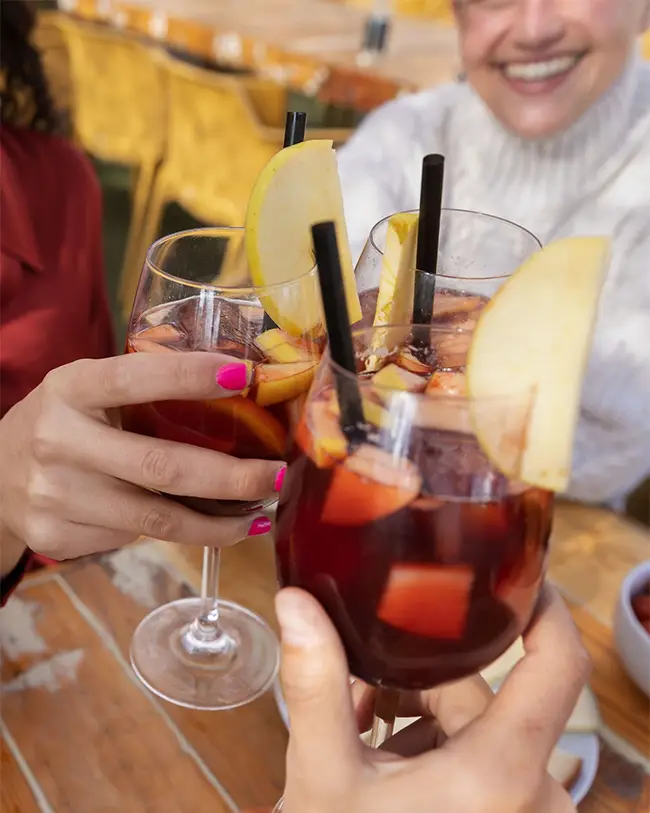
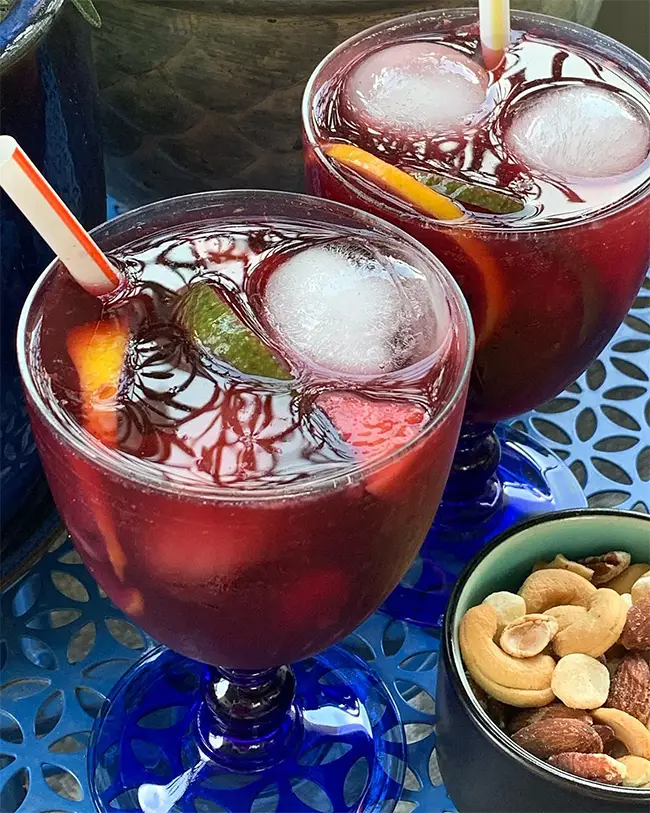
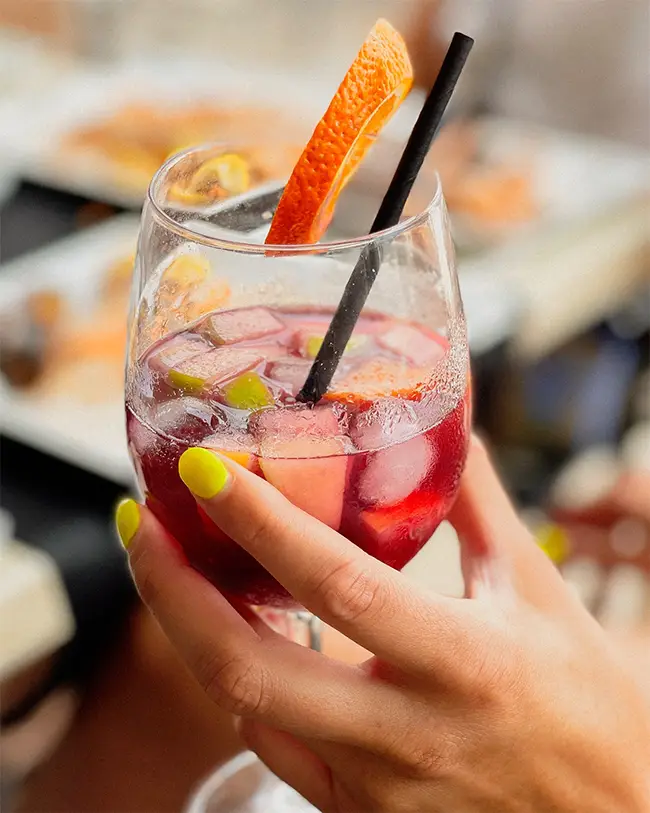
How to make it for yourself
Sangria may always taste better when you’re enjoying some Spanish sunshine, but it can still taste pretty good when you’re at home. Here’s recipe for it that we made at a cookery class in Menorca.
Ingredients
- 1 x 750 ml bottle of dry Spanish red wine
- 80 ml brandy
- 180 ml orange juice
- ½ an apple – cored & chopped into small pieces
- ½ an orange – deseeded and chopped into small pieces
- 50g brown sugar
- 1 cinnamon stick
Directions
- Place the apple, orange and sugar into a pitcher and muddle with a wooden spoon for about a minute.
- Add the brandy and orange juice and muddle for another 30 seconds.
- Stir in the wine, pop in the cinnamon stick and give another quick stir.
- Pop it the fridge and let it chill for at least 30 minutes (2 hours is better).
- Serve over ice. You can add a splash of something fizzy (soda water, sparkling mineral water or Cava all work) if you like.
Tinto de Verano
While Sangría is popular with tourists, amongst of the Spanish, Tinto de Verano (literally Summer Red Wine) is the preferred option. I was introduced to it at a Visit Spain event promoting Andalucía and I enjoyed the light, refreshing taste of it. It’s a great drink for a hot afternoon, sat at a beach bar.
Some people will tell you that it’s similar to Sangría, but the only similarity is that they are both made with red wine. Tinto de Verano is a much simpler drink and doesn’t have the fruitiness of Sangría. In its purest form, it only contains red wine and lemon soda, typically La Casera, which is the most popular brand of lemonade in Spain.
Where to try it
You pretty much get Tinto de Verano in any bar in Spain, but here are few suggestions for places to try it:
- Irati Taverna Basca in Barcelona – Lively basque tapas bar in
📍 Address: Carrer del Cardenal Casañas 17, Barcelona, 08002
🏡 Neighbourhood: Barri Gotic
🚇 Nearest station: Liceu – L3
🚍 Bus routes: 59
- Mercado de San Miguel in Madrid – A Spanish culinary experience in a market hall dating back to 1916
📍 Address: Plaza de San Miguel, Madrid, 28005
🏡 Neighbourhood: Centro
🚇 Nearest station: Ópera – L2 & L5, Sol – L1, L2 & L3
🚍 Bus routes: M3 & N26
- Urban Bar in Valencia – Craft beer, great wines & good food
📍 Address: Carrer del Comte d’Altea 40, València, 46005
🏡 Neighbourhood: La Gran Via
🚇 Nearest station: Colón – M3, M5 & M7
🚍 Bus routes: 92, 93 & C2
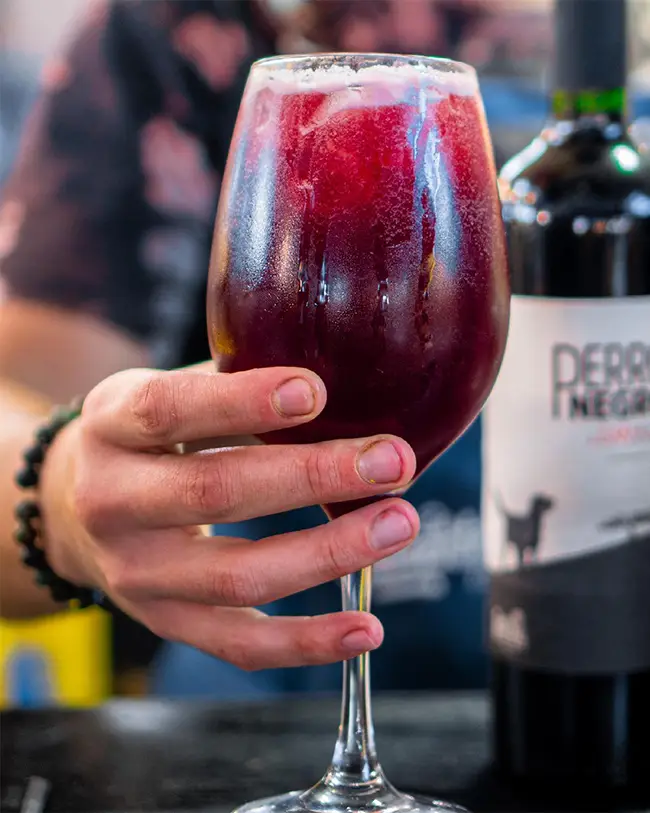
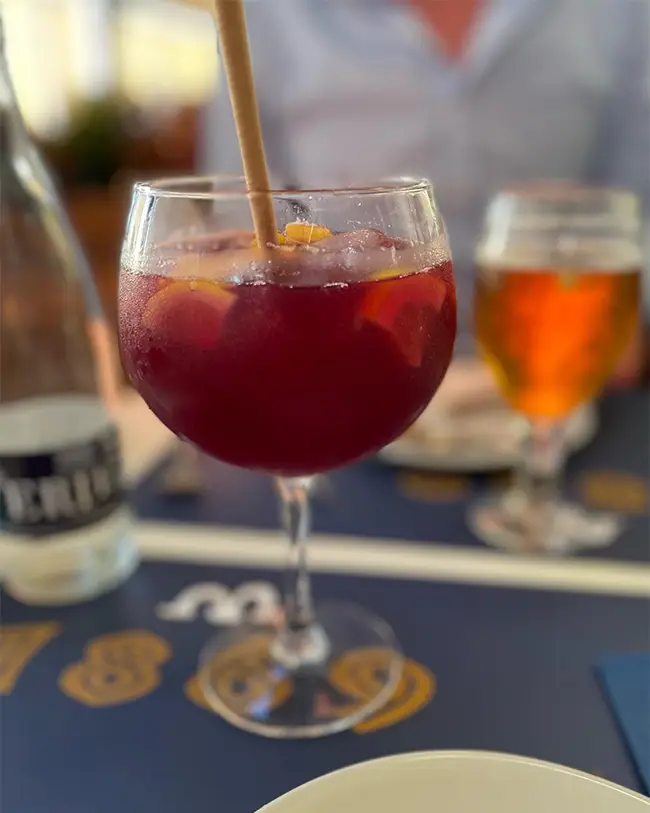
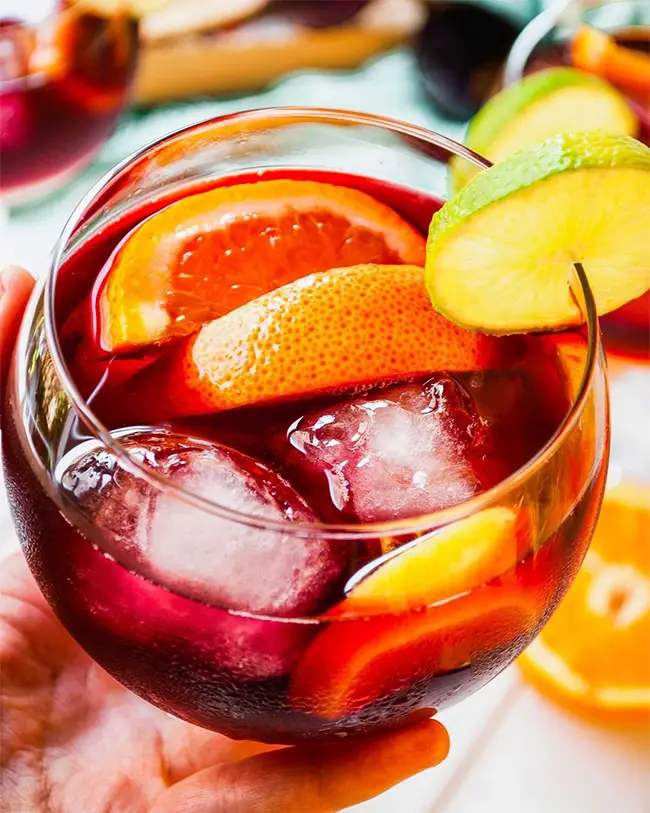
Make this Spanish classic at home
Tinto de Verano isn’t the most complex drink to make, which means that you have no excuses for not mixing yourself a refreshing glass to cool down with on a hot day.
Ingredients
- 1 measure of dry Spanish red wine
- 1 measure of lemon soda (you can substitute a mixture of half Sprite or 7UP and half soda water)
- Ice to serve
- Lemon slice to garnish
Directions
- Place the ice in a glass.
- Add the wine.
- Our over the lemon soda and give it a quick stir.
- Garnish with the lemon slice and start sipping!
Kalimotxo
When Enric, my old Spanish teacher, told me about Kalimotxo, my reaction was “¿estás de broma? Es un chiste ¿verdad?” (Are you kidding? It’s a joke isn’t it?). Well, it turned out that this bizarre sounding combination of cola and red wine is an actual drink and is a very popular drink amongst jóvenes (teenagers and young adults). Alongside beer, it’s the mainstay of any botellón (an outdoor drinking party).
The recipe sounds as though it ought to taste disgusting, but the reality is that the sum is greater than the two parts. It’s not something I have ever had in a bar, but I have knocked a few back at Spanish parties and it really does taste way better than it sounds.
Some bartenders have started adding this to cocktail menus at fancy bars in New York, with the associated fancy price tag. And yet that is a drink that has been popular in bars the Basque country for years and you can get it for a few Euros.
Where to try it
Although you may be able to get it in bars in other parts of Spain, it’s really only the Basque Country that it’s a commonly served drink. If you’re exploring Pais Vasco, here are couple of suggestions:
- Con B de Bilbao in Bilbao
📍 Address: Andra Maria Kalea 9, Bilbao, 48005
🏡 Neighbourhood: Casco Viejo - Polka in San Sebastián
📍 Address: Sarriegi Plaza 7, Donostia, Gipuzkoa, 20003
🏡 Neighbourhood: Parte Vieja
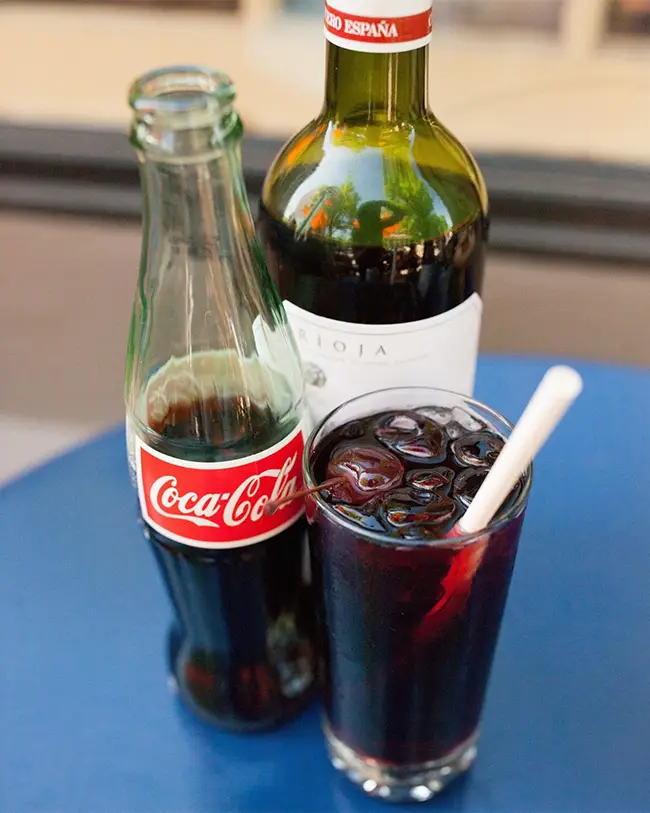
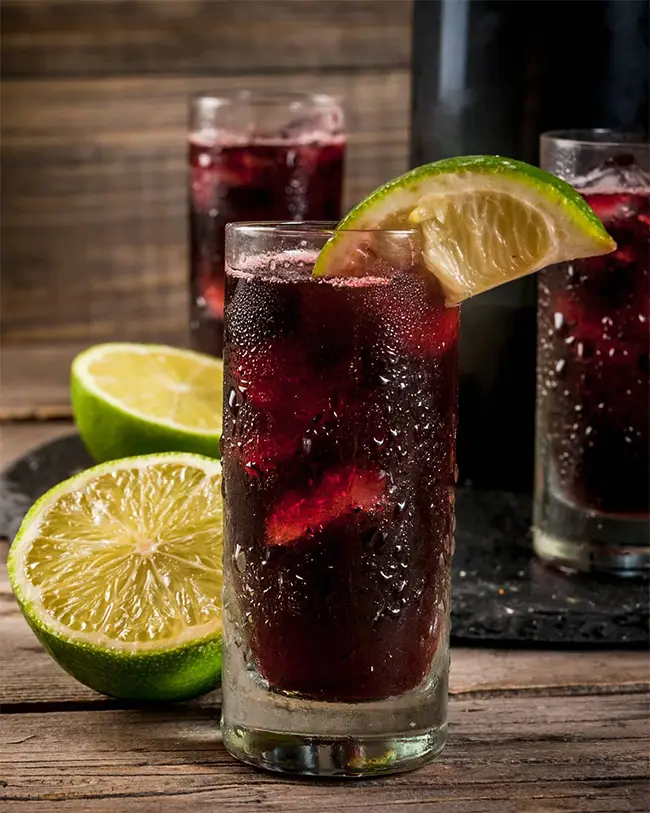
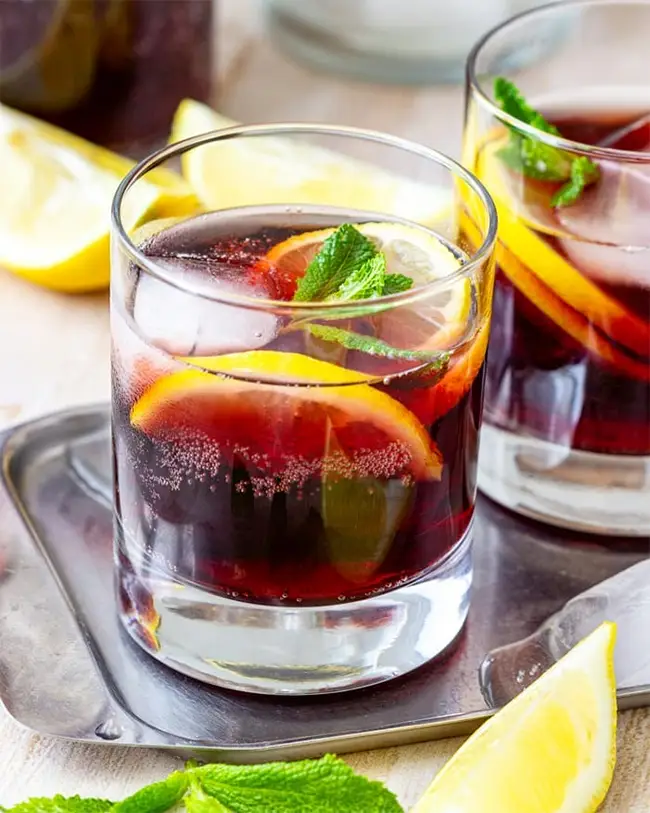
Make Kalimotxo at home
Another simple drink to prepare, Kalimtxo is super simple to make at home. For this one, I have gone for two recipes.
The bar recipe – ingredients
- 1 measure of dry Spanish red wine
- 1 measure of cola
- Ice to serve
- Lemon slice to garnish
Directions
- Place the ice in a tall glass.
- Add the wine.
- Pour over the cola and give it a quick stir.
- Garnish with the lemon slice and drink straight away.
The “jóvenes getting ready for a botellón” recipe – ingredients
- 1 x 2 litre bottle of the cheapest red wine they have at the supermarket (it’ll be in a plastic bottle on the bottom shelf).
- 1 x 2 litre bottle of the cheapest supermarket own brand cola (full fat, no sugar free nonsense).
Directions
- Go to the home of one of your mates whose parents will be out. (Yes, we know your parents did the same thing when they were your age, but do you really want to risk a lecture?)
- Pour half the bottle of wine into a jug.
- Top up the half empty wine bottle with half of the cola.
- Pour the wine you put in the jug into the cola bottle.
- Put the cap back on both bottles.
- Wash the jug and clean up any spills to hide any evidence.
- Grab your four litres of kalimotxo and go party. Don’t forget to take some plastic cups to share it with your mates.
Agua de Valencia
Just ahead of my first visit to Valencia in 2016, I was in a bar chatting to one of the teachers on a night out with my Spanish school about my upcoming trip. I knew she was from the city, so I had been asking her for some tips. Another one of teachers piped up and said that I had to try Agua de Valencia while I was there and recommended a bar by the beach where I could get a good one. With Andrea’s suggestion in mind, we found the bar and loved the drink.
If you know the layout of Valencia, you’ll know that Rusafa, where we were staying, is a fair old schlep from the beach. Fortunately, the ground floor of the apartment building we were staying in housed a great bar that served a mean pitcher of Agua de Valencia. Popping in for one became a nightly ritual for the rest of our stay.
According to the stories, Agua de Valencia (meaning ‘Valencian Water’) was invented in 1959 by Constante Gil, owner of Café Madrid de Valencia. Some Basque travellers who used to frequent the bar would order bottles of ‘Agua de Bilbao‘, the bar’s finest cava, every night. One night they challenged Gil to come up with a new drink for them and Agua de Valencia was born. For about ten years it was a house signature drink but from the early 1970s it grew in popularity and began to be served across the city. The base ingredients are cava, fresh orange juice, vodka and gin. It’s generally served by the pitcher and is very refreshing.
Where to try it
You can probably get one around Spain, but the best place to try it is definitely in its hometown, so here are couple of suggestions:
- Cafe Madrid – Stylish cocktail bar where Agua de Valencia was born
📍 Address: Carrer de l’Abadia de Sant Martí 10, Valencia, 46002
🏡 Neighbourhood: Ciutat Vella
🚇 Nearest station: Àngel Guimerà – M1, M2 & M3
🚍 Bus routes: 73 - Cafe de las Horas – Glamorous bar with neo-baroque design and vibrant atmosphere
📍 Address: Carrer del Comte d’Almodóvar 1, Valencia, 46003
🏡 Neighbourhood: Ciutat Vella
🚇 Nearest station: Colón – M3, M5 & M7
🚍 Bus routes: 9, L1, L111A, L111B & L1113
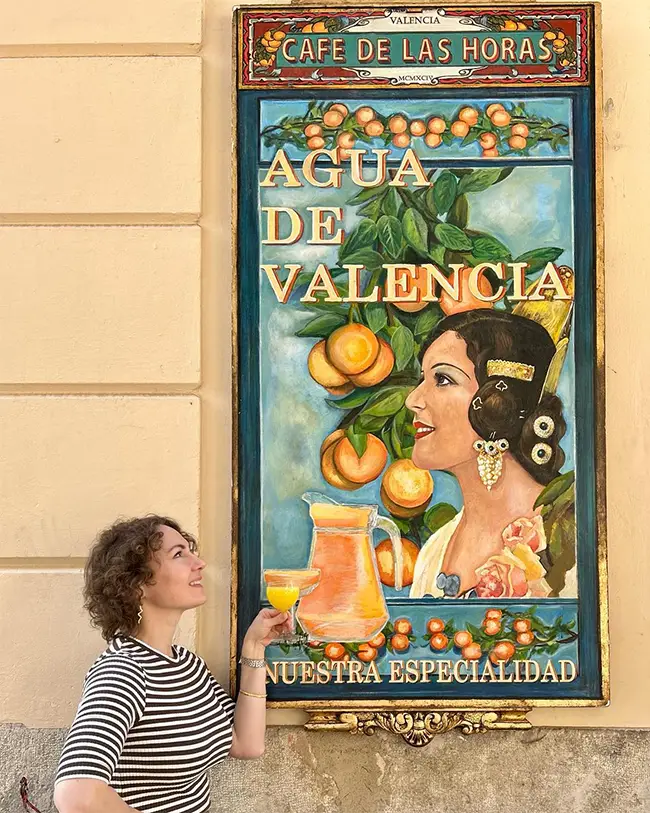
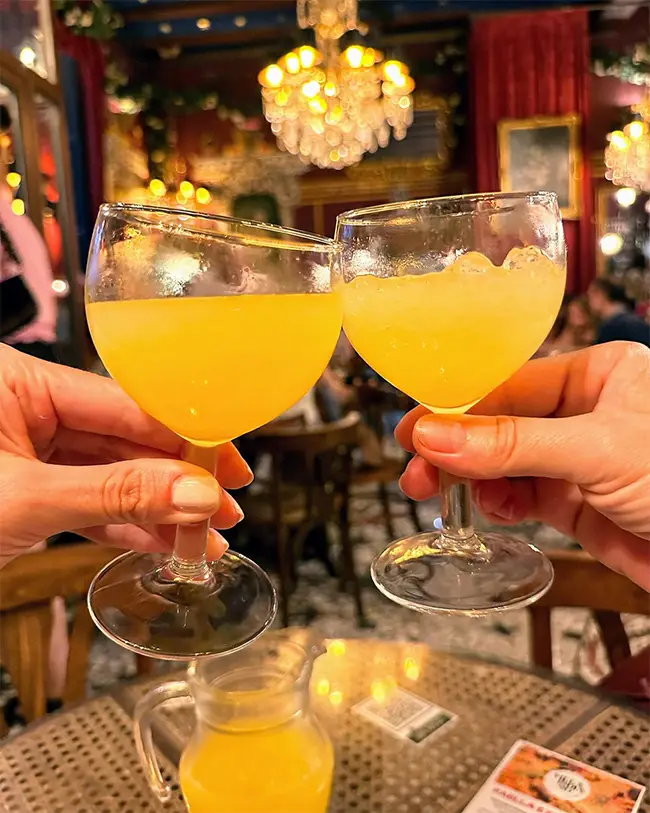
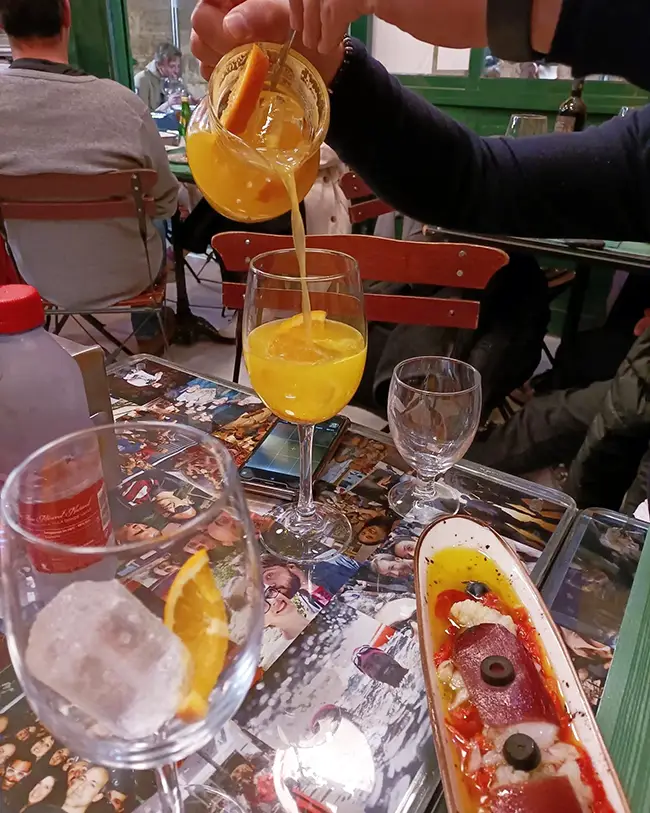
Prepare a jug of refreshing orangey goodness for yourself
You’ll find some variations in recipes on the spirits used to make Agua de Valencia. However, I’ve stuck to the original ones as used in the Café de Madrid recipe.
Ingredients
- 1 x 750ml bottle of cava
- 30 ml vodka
- 30 ml London dry gin
- 75 ml freshly squeezed orange juice (preferably from Valencian oranges)
- 1 tsp white sugar
- 2 tsp boiling water
Directions
- Dissolve the sugar in the boiling water and set aside to cool.
- Mix the orange juice, vodka gin and cooled sugar syrup.
- Add ice to the mixture.
- Pour in the cava and stir very gently.
- Enjoy!!
Barraquito
If you’ve had a barraquito, you may have asked yourself the question “is this a drink or a dessert?”. And the answer is that it’s probably a bit of both. I came across the barraquito when I was researching for a trip to Tenerife. After a bit of Googling, I found some places that had good recommendations for them, and we were all set to indulge on our trip.
I can honestly say that in an afternoon, with a nice slice of cake it’s definitely a drink. However, if you have it after dinner it’s filling enough to be a dessert. So that’s that question answered.
According to legend, a regular at Bar Imperial in Santa Cruz de Tenerife, Don Sebastion Barraco Rubio, would come in and always order a cortado (a 50:50 mix of espresso an warm milk) with condensed milk, a shot of Licor 43 (Spain’s most popular liqueur), some lemon rind and cinnamon in a long glass. Don Sebastian’s nickname was Barraquito, and the drink takes it’s name from him. Today it’s available across the whole of the Canary Islands.
Where to try it
It’s pretty much a specialty of Las Islas Canarias and if that’s not a good reason for visiting them I don’t know what is. Here are couple of places that I can recommend:
- Palmeltia in Santa Cruz de Tenerife – Branch of a small Tenerife group of pastererís with outside seating
📍 Address: Calle del Castillo 9, Santa Cruz de Tenerife, 38002
🏡 Neighbourhood: Centro - Palmeltia in San Crsitobal de la Laguna – La Laguna branch of a small Tenerife group of pastererís serving great cakes
📍 Address: Edificio Belén, Plaza de la Concepción 14A, La Laguna, Santa Cruz de Tenerife, 38201
🏡 Neighbourhood: Centro
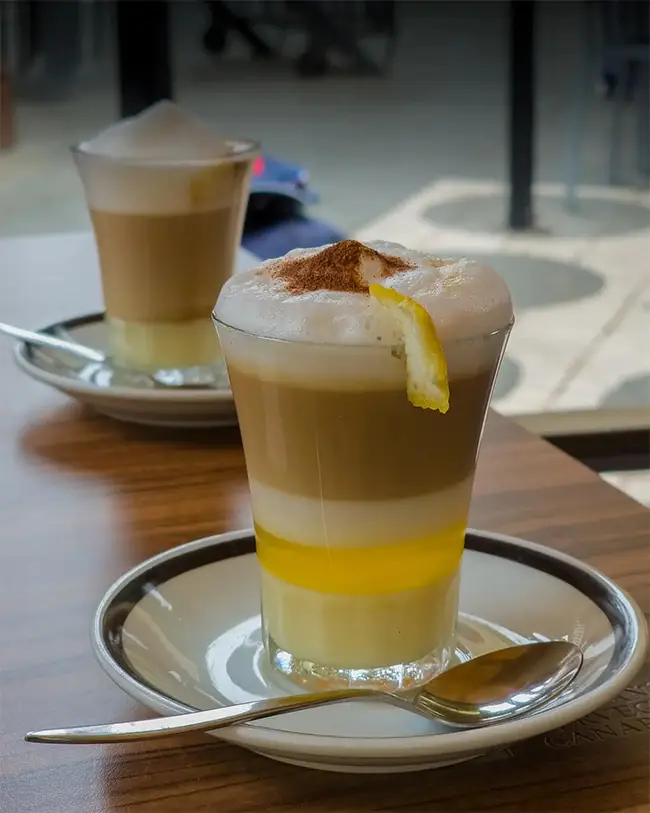
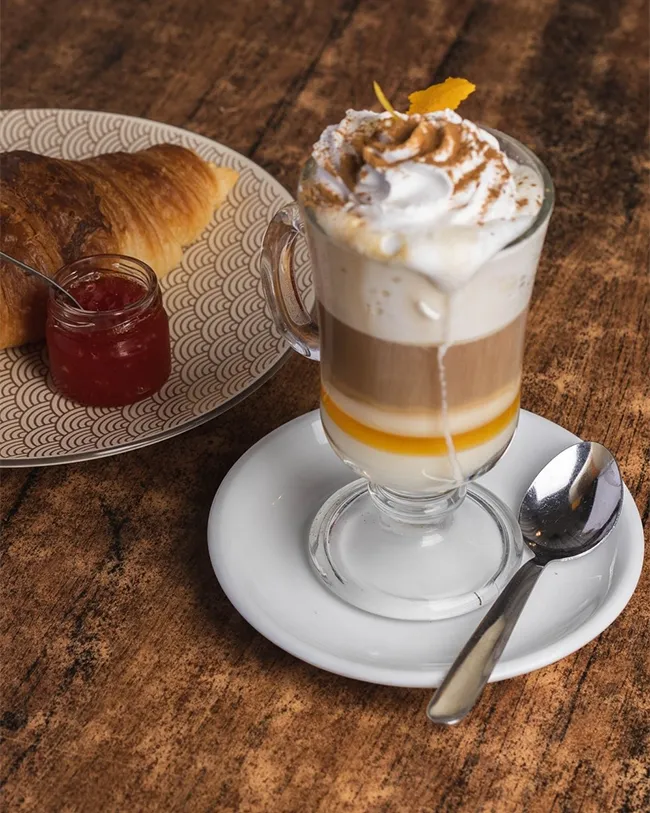

Make this Canarian classic at home
This one needs a bit of steady hand to get the layering right. If the layering doesn’t work out as you’d like, don’t sweat it. After all, you’re supposed to stir your Barraquito before you drink it, so…
Ingredients
- 30 ml condensed milk
- 30 ml Licor 43 (you can substitute another liqueur if you can’t get hold of it)
- 1 shot of espresso (about 30 ml)
- Foamed milk
- Ground cinnamon
- 1 piece of lemon peel (no pith)
Directions
- Carefully pour the condensed milk into a glass, avoiding getting any on the sides.
- Using a spoon, layer the Licor 43 on top of the condensed milk.
- Carefully layer the espresso on top of the Licor 43.
- Layer the foamed milk on top of the coffee, finishing of with a spoonful of the foam.
- Sprinkle with the cinnamon and carefully place the lemon peel on the top.
- When you’re ready to dink, give it a stir to mix the ingredients.
Getting a taste of Spain
They say that travel broadens the mind, and I also believe it should excite your taste buds. Enjoying local food is one best ways of get a real flavour of a country. In Spain, just as the cuisine varies across the county’s regions, so do the drinks.
Every region in Spain has its local wines and beers (yes, there is more to Spanish beer than Estrella, San Miguel and Cruzcampo). There are some things like Barraquito that you would be hard pressed to find outside of the Canary Islands but others, like Tinto de Verano, can be enjoyed all across the country. Next time you visit Spain, why not try one of them. ¡Salud!
My first visit to Spain was a holiday in Sitges, but it was the first time that I stayed in Barcelona that I fell in love with the country. A few holidays exploring Andalucía and more trips to Barcelona and Madrid lead me to learning Spanish. It was at my Spanish school, being exposed to teachers from Spain, that I started developing a real passion of the country, the food and the culture. What’s not to love about a country that believes that beer doesn’t really count as an alcoholic drink and where <em>sobremesa</em>, the act of sitting around chatting for hours after a meal, is as important as the food itself.
